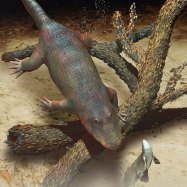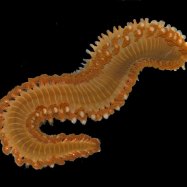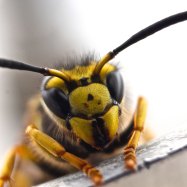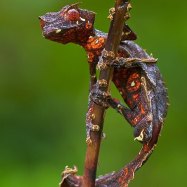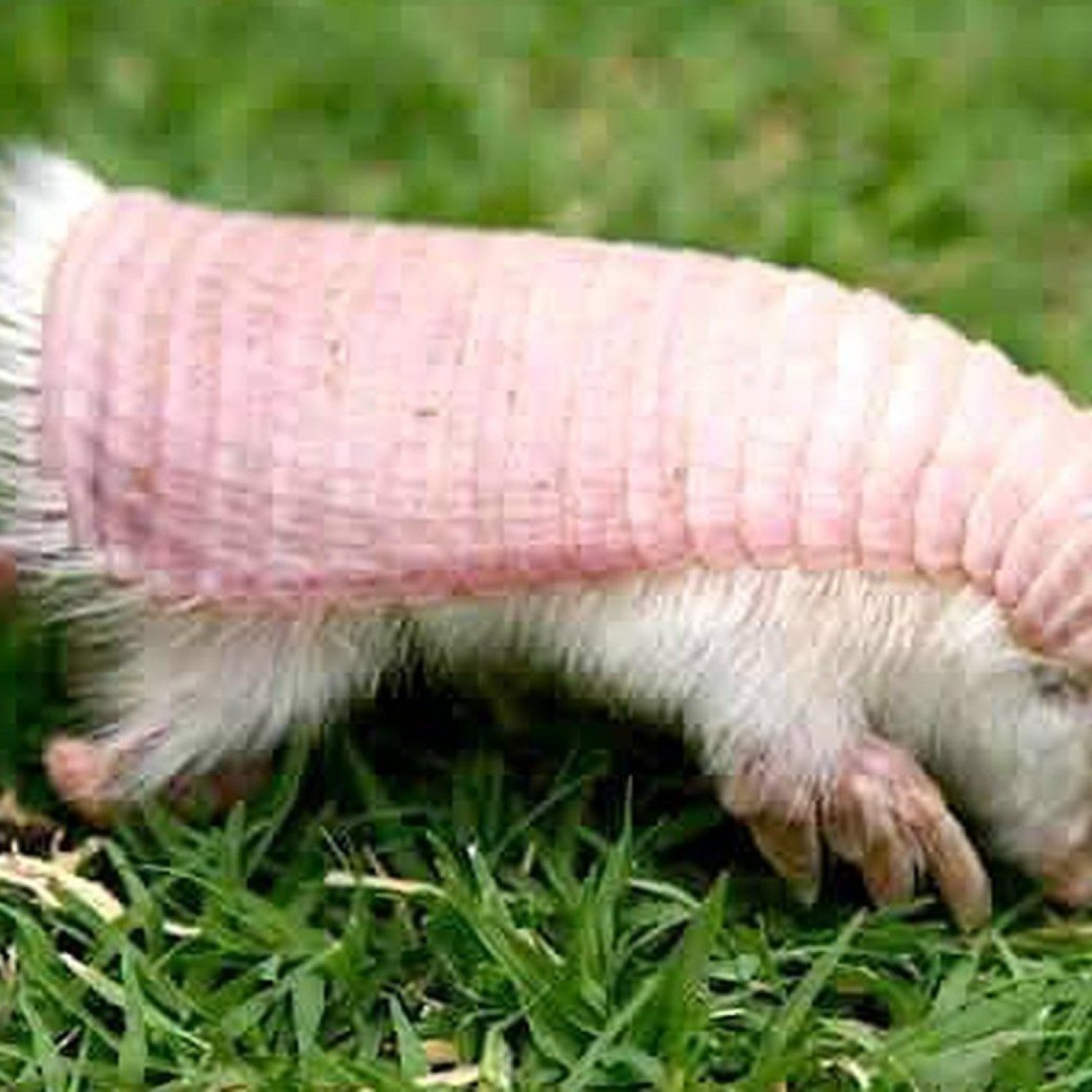
Pink Fairy Armadillo
11-15 cm
The Pink Fairy Armadillo is a fascinating creature found in Central and Western Argentina. With a small and compact body shape, it measures 11-15 cm in length. Despite its name, it is not actually pink but has a pale pink hue. Belonging to the family Chlamyphoridae, it is also known as the sand dune armadillo due to its preference for sandy environments. These elusive animals are rarely seen in the wild, making sightings a special and memorable experience. #AnimalFacts #PinkFairyArmadillo #ArgentinaWildlife
Animal Details Summary:
Common Name: Pink Fairy Armadillo
Kingdom: Animalia
Habitat: Deserts
The Enchanting and Mysterious Pink Fairy Armadillo of Argentina
The vast and diverse landscapes of Argentina house some of the most intriguing and unique creatures on Earth. From the mighty Andean condor to the elusive jaguar, there is no shortage of fascinating animals to discover in this South American country. However, among all these impressive creatures, there is one that stands out for its unusual appearance and almost mythical reputation – the Pink Fairy Armadillo.Scientifically known as Chlamyphorus truncatus, the Pink Fairy Armadillo is a one-of-a-kind mammal that belongs to the Cingulata order and the family Chlamyphoridae Pink Fairy Armadillo. This tiny creature, measuring only 11-15 cm in length, is also known by its common name, the Pink Fairy Armadillo. But don't let its small size fool you – this creature is full of surprises.
Native to the deserts of Argentina, the Pink Fairy Armadillo is difficult to spot and not much is known about its behavior and ecology. However, through years of research and observations, scientists have been able to uncover some of the enchanting and mysterious features of this unique animal.
Making its Home in the Desert
The Pink Fairy Armadillo inhabits the sandy and dry regions of central and western Argentina, where its small size and sandy colored fur blend in perfectly with the surrounding environment. These areas are usually hot and arid, with temperatures that can reach up to 40 degrees Celsius.The Pink Fairy Armadillo is a burrowing animal, spending most of its time underground. It creates intricate tunnel systems that can extend up to two meters deep, allowing it to escape the scorching heat of the day and find shelter from predators. These tunnels also serve as protection from the high winds and sandstorms that are common in the desert Plesiosaur.
Feeding on Insects
One of the most interesting features of the Pink Fairy Armadillo is its unique feeding method. Being an insectivorous animal, it feeds mainly on ants and termites, using its strong claws to dig into their underground nests. It also has a long and sticky tongue, similar to that of an anteater, which it uses to catch its prey.Unlike other armadillo species, the Pink Fairy Armadillo does not have a large and powerful snout designed for digging. Instead, its small, slender, and sharp claws are perfect for navigating through the narrow tunnels of insect colonies. This unique adaptation has earned it the nickname "sand swimmer."
A Rare and Elusive Creature
The Pink Fairy Armadillo is not only elusive when it comes to human observation, but it is also a rare animal. Due to its secretive lifestyle and limited distribution, it is considered a vulnerable species. It is also threatened by habitat loss and destruction, as well as predation by domestic dogs and cats.To make matters worse, the Pink Fairy Armadillo has a low reproductive rate, with females giving birth to only one offspring per year. This makes it difficult for the population to recover from any disturbances or threats.
A Fascinating and Unique Appearance
One of the first things that catch the eye when describing the Pink Fairy Armadillo is its pinkish-brown coloration, which gives it an almost ethereal and otherworldly appearance. However, this unique coloration is not just for show – it serves as camouflage, allowing the animal to blend in with the sandy desert floor.The Pink Fairy Armadillo also has a small and compact body shape, with a flat, oblong carapace covering its back. This carapace is made up of keratin plates, similar to human nails, and provides protection against predators and the harsh desert environment.
Another interesting feature of the Pink Fairy Armadillo is its long, white, and fluffy tail. This tail serves as a balancer, helping the animal to maintain its balance when digging through the sand or running.
A Symbol of Protection and Good Luck
In Argentina, the Pink Fairy Armadillo is not only known for its mythical appearance but also as a symbol of protection and good luck. According to local beliefs, it brings good fortune to those who are lucky enough to spot one in the wild. It is also believed that if someone harms or kills a Pink Fairy Armadillo, they will suffer bad luck and misfortune.This mystical status is also reflected in the animal's name. The word "fairy" comes from the Latin word "fatum," which means fate or destiny. It is believed that the Pink Fairy Armadillo has the power to help guide one's destiny and bring good luck.
In Conclusion
The Pink Fairy Armadillo is a truly fascinating and mysterious creature. Its unique appearance and lifestyle have captured the minds and hearts of people all over the world. However, despite its enchanting reputation, this animal remains a vulnerable species, and its future is uncertain.Though there is much more to be discovered about the Pink Fairy Armadillo, this elusive and rare creature remains a symbol of the mysterious and magical world we live in. As we continue to learn more about this intriguing animal, it is essential that we also strive to protect and preserve its fragile existence.
So, if you ever find yourself wandering through the deserts of Argentina, keep your eyes peeled for a glimpse of the mystical Pink Fairy Armadillo. Who knows? It may just bring you good fortune and a deeper appreciation for the wonders of the natural world.

Pink Fairy Armadillo
Animal Details Pink Fairy Armadillo - Scientific Name: Chlamyphorus truncatus
- Category: Animals P
- Scientific Name: Chlamyphorus truncatus
- Common Name: Pink Fairy Armadillo
- Kingdom: Animalia
- Phylum: Chordata
- Class: Mammalia
- Order: Cingulata
- Family: Chlamyphoridae
- Habitat: Deserts
- Feeding Method: Insectivorous
- Geographical Distribution: Argentina
- Country of Origin: Argentina
- Location: Central and Western Argentina
- Animal Coloration: Pinkish-brown
- Body Shape: Small and compact
- Length: 11-15 cm
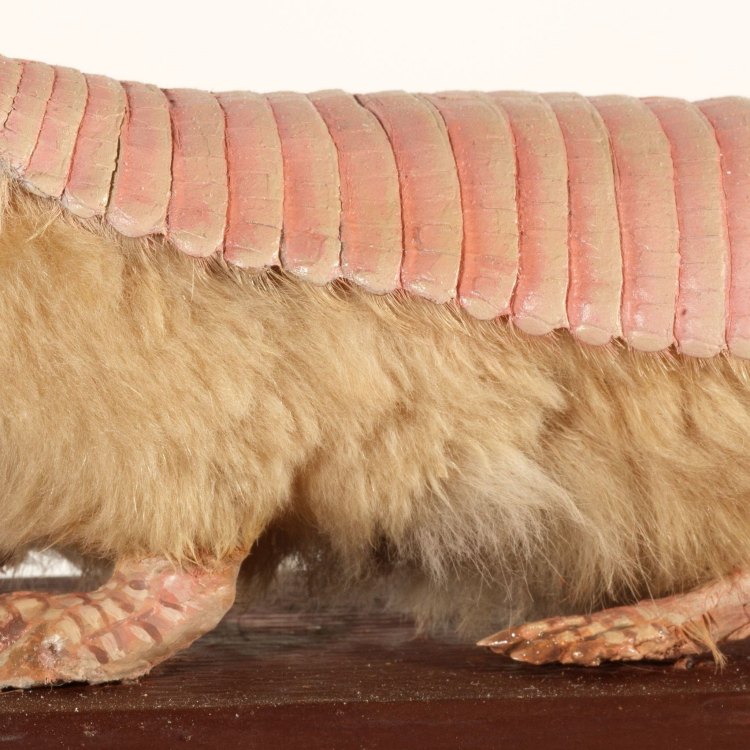
Pink Fairy Armadillo
- Adult Size: 10-15 cm
- Average Lifespan: 3-5 years
- Reproduction: Sexual
- Reproductive Behavior: Monogamous
- Sound or Call: Unknown
- Migration Pattern: Non-migratory
- Social Groups: Solitary
- Behavior: Nocturnal and burrowing
- Threats: Habitat loss, predation, and hunting
- Conservation Status: Data deficient
- Impact on Ecosystem: Preserves soil structure and controls insect populations
- Human Use: Not used by humans
- Distinctive Features: Shell-like armor, pinkish coloration, shovel-like forelimbs
- Interesting Facts: It is the smallest species of armadillo and is rarely seen due to its burrowing habits.
- Predator: Unknown
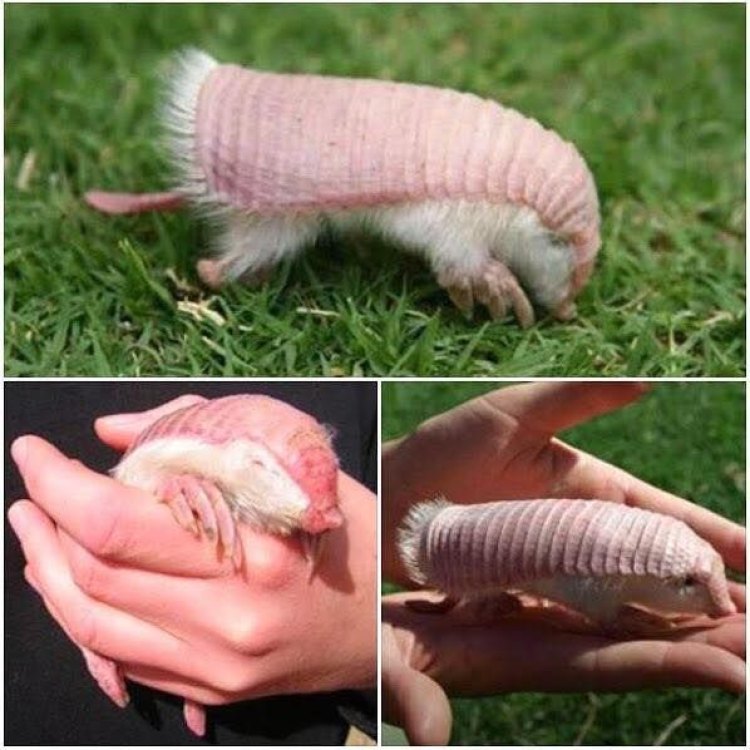
Chlamyphorus truncatus
The Fascinating World of the Pink Fairy Armadillo
In a world full of diverse and exotic animals, the Pink Fairy Armadillo stands out as a truly unique and intriguing creature. From its colorful appearance to its solitary behavior, there is so much to discover about this small but mighty mammal. So, let's dig deep into the world of the Pink Fairy Armadillo and uncover its distinctive features, behavior, and impact on the ecosystem.The Pink Fairy Armadillo, also known as the Pichiciego or the Pichi, is a small armadillo species native to Argentina PeaceOfAnimals.Com. It is the smallest species of armadillo, measuring only 10-15 cm in length, and is the only member of its genus, Chlamyphorus. The name "Fairy" in its common name refers to its delicate and fairy-like appearance, while "Pink" highlights its unique pinkish coloration.
These elusive creatures are primarily found in semi-desert regions, including grasslands, scrub, and sandy plains. Due to their burrowing habits, they are rarely seen, and thus, much of their behavior and lifestyle remains a mystery. However, scientists have managed to uncover some interesting facts about these creatures through careful research and observations.
One of the unique features of the Pink Fairy Armadillo is its shell-like armor. Unlike other armadillo species, their armor is not hardened and is made up of overlapping scales that allow them to move freely. This armor provides protection against predators and helps them retain moisture in their arid habitat. It also acts as a thermal insulator, helping them regulate their body temperature Paddlefish.
But their delicate armor is not the only distinctive feature of these creatures. The Pink Fairy Armadillo is covered in a soft, pale-pink fur that gives them their unique pinkish appearance. This fur not only adds to their cuteness but also helps them camouflage in their sandy habitat. Their shovel-like forelimbs are another fascinating adaptation for their burrowing lifestyle. These powerful forelimbs, equipped with long claws, allow them to dig tunnels in the soil, where they spend most of their time.
One of the most interesting aspects of the Pink Fairy Armadillo is its reproductive behavior. Unlike many other armadillo species, they are monogamous animals and form lifelong bonds with their mates. Once paired, they will remain together for their entire lives, sharing a burrow and cooperating in raising their young ones. Female Pink Fairy Armadillos have a unique reproductive strategy, as they can delay implantation of their fertilized eggs to ensure their young ones are born in a more favorable environment.
Speaking of their young ones, the Pink Fairy Armadillo gives birth to a single offspring once a year. The baby is born fully formed, with its armor and fur already developed, and is weaned off its mother's milk within a few months. However, the maternal care does not end there. The female Pink Fairy Armadillo will continue to carry her young one in her burrow until it is big enough to protect itself.
As a nocturnal and solitary species, the Pink Fairy Armadillo spends most of its life underground, emerging only at night to forage for food. Despite their small size, they are voracious diggers and can dig up to 20 meters of tunnels in a single night. They mainly feed on insects, such as ants, termites, and beetles, but they have also been observed eating plant matter. Their digging habits have a significant impact on the ecosystem as they help aerate the soil, which promotes plant growth, and controls insect populations.
Unfortunately, the Pink Fairy Armadillo is facing several threats in its natural habitat. One of the main threats is habitat loss due to agricultural activities, such as cattle grazing and crop cultivation. The destruction of their habitats not only limits their access to food and shelter but also disrupts their burrowing activities. They are also vulnerable to predation by carnivorous animals, such as foxes, birds of prey, and snakes. In addition, they are sometimes hunted for their unique appearance, which has led to a decline in their population.
Due to these threats, the Pink Fairy Armadillo is now listed as "Data Deficient" on the IUCN Red List, which means that there is insufficient information available to assess their conservation status. However, local efforts are being made to protect these elusive creatures, such as creating protected areas and promoting awareness about their importance in the ecosystem.
Despite their cute and cuddly appearance, the Pink Fairy Armadillo is not a pet and should not be kept in captivity. These animals are not suited for domestication and require specific conditions to survive and thrive. Therefore, it is crucial to leave them in their natural habitat and only observe them from a distance.
In conclusion, the Pink Fairy Armadillo may be small, but it has so much to offer in terms of uniqueness and adaptation. From their colorful appearance to their interesting behavior and impact on the ecosystem, they truly stand out in the animal kingdom. It is our responsibility to protect and preserve these fascinating creatures and ensure their survival for generations to come.
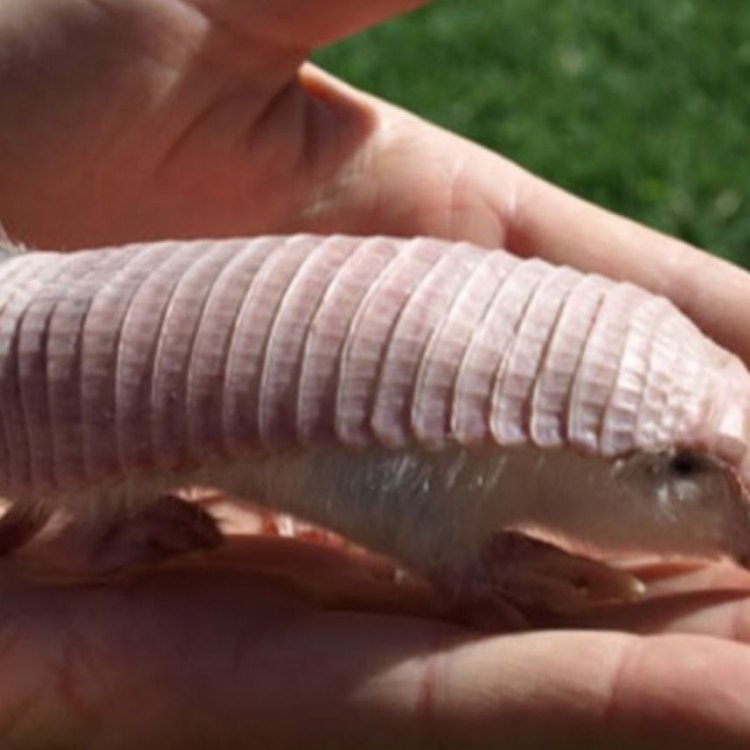
The Enchanting and Mysterious Pink Fairy Armadillo of Argentina
Disclaimer: The content provided is for informational purposes only. We cannot guarantee the accuracy of the information on this page 100%. All information provided here may change without prior notice.






